Last Updated on: 11th September 2023, 04:07 pm
The Ludovisi Battle sarcophagus can be found in Rome in Palazzo Altemps, which is part of Museo National Romano (The National Museum of Rome). Named after Ludovico Ludovisi, the sarcophagus depicts a battle of Romans and barbarians. It is a memorial of this Rome battle scene that took place in mid third century. Discovered in 1621 in a tomb nearby Porta Tiburtina in Rome, the Grande Ludovisi sarcophagus is also a remarkable piece of art, a Roman sarcophagus relief featuring amazing details.
The Ludovisi Battle sarcophagus was by far the piece that impressed me the most out of everything I’ve seen in Rome. Palazzo Altemps, which hosts the Ludovisi Battle sarcophagus, was one of the first museums I’ve visited during my six days in Rome.
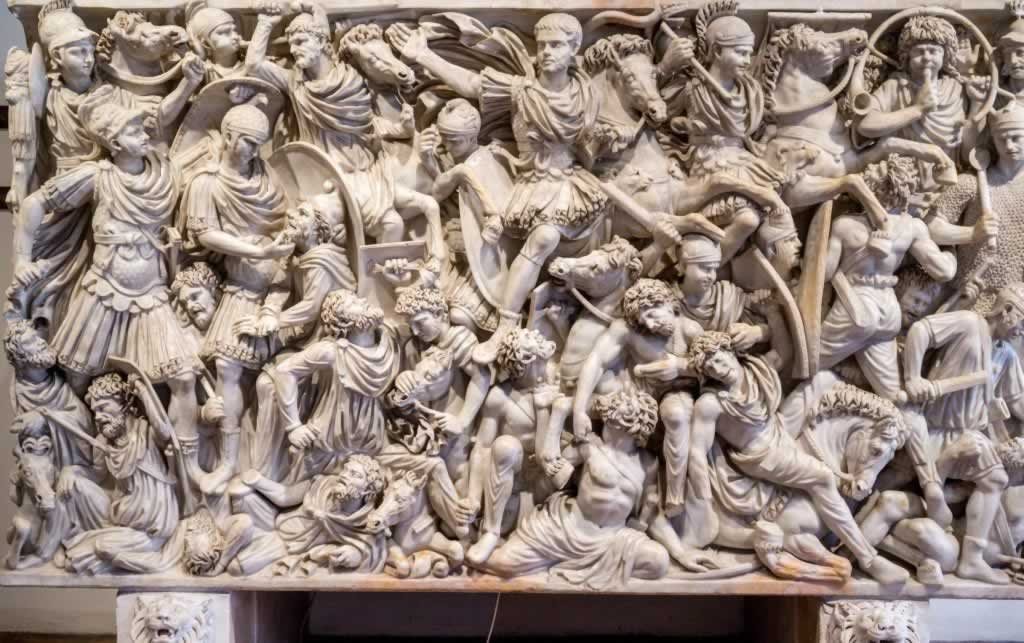
Palazzo Altemps is one of the four venues of The National Museum of Rome, together with Crypta Balbi, Palazzo Massimo alle Terme and the Baths of Diocletian. After one full week of exploring the remains of Ancient Rome, the Ludovisi Battle sarcophagus was still high on my “top things to see in Rome” list. It is one of my all time favorite landmarks in Italy.
Main Topics of Ludovisi Battle Sarcophagus – How To Find This Roman Battle Scene and Why Visit?
Where Is the Ludovisi Battle Sarcophagus?
You’ll find this sarcophagus in Palazzo Altemps, in Rome.
Palazzo Altemps is very close to Piazza Navona and it is home to a wonderful collection of Greek and Roman sculpture. The Grande Ludovisi sarcophagus is only one of the pieces belonging to the private collection of Ludovico Ludovisi, one of the rich Roman guys of the 17th century.
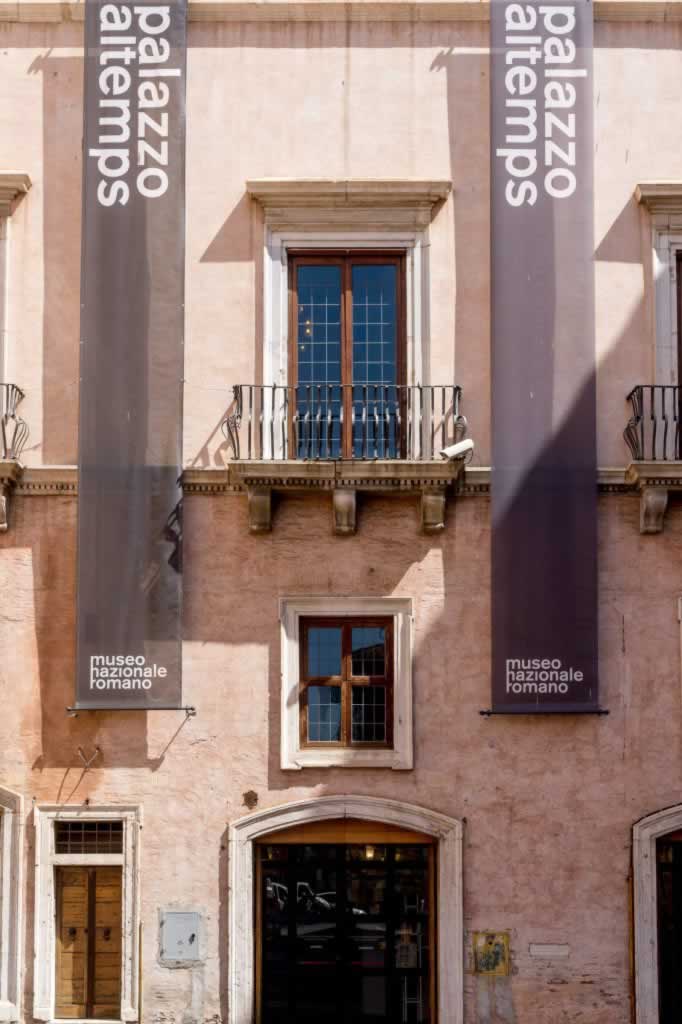
It matters less where in Palazzo Altemps this sarcophagus is located. You’ll love each and every room of this museum, I promise you that.
When I visited it, Palazzo Altemps was full of art students sitting on the ground, drawing. Those magnificent statues were their models. Apart from the art students, there were barely any visitors. I was happy to have all those beautiful things to myself for hours.
Why Is the Ludovisi Battle Sarcophagus Important?
I had no idea that there was a Ludovisi battle or that someone created this sarcophagus depicting Romans and barbarians during a fight. However, this sculpture fascinated me at a glance, making me want to know more about this battle and about all famous Roman battles for that matter.
The Ludovisi Battle sarcophagus is important from both historical and artistic point of view. First of all, it depicts a battle of Romans and barbarians. It is a memorial of this battle that apparently took place in mid third century.
Discovered in 1621 in a tomb nearby Porta Tiburtina in Rome, this sarcophagus is one of the best proofs of the artistic trends of its time. It also shows how political messages were conveyed in those times. If you want to know more about the importance of this artifact, check out the Khan Academy page on this topic.
How To “Read” the Battle Scenes on the Sarcophagus?
Three Roman soldiers are more prominent than the other characters. In addition, the one in the middle of the scene has an X on his forehead. The meaning of this cross sign was that the guy belonged to the Mithraism cult. Apparently, he was a general in the Roman army. Among all Roman soldiers depicted in this scene, he is the only one who doesn’t wear a helmet. This means he was invincible.
All barbarians have their faces changed with fear. Even their horses look exhausted and horrified. Romans, on the contrary, seem to have the satisfaction of a job well-done. Also, they are bigger than barbarians, and they are grouped in the upper part of the relief. Their victory is imminent and obvious.
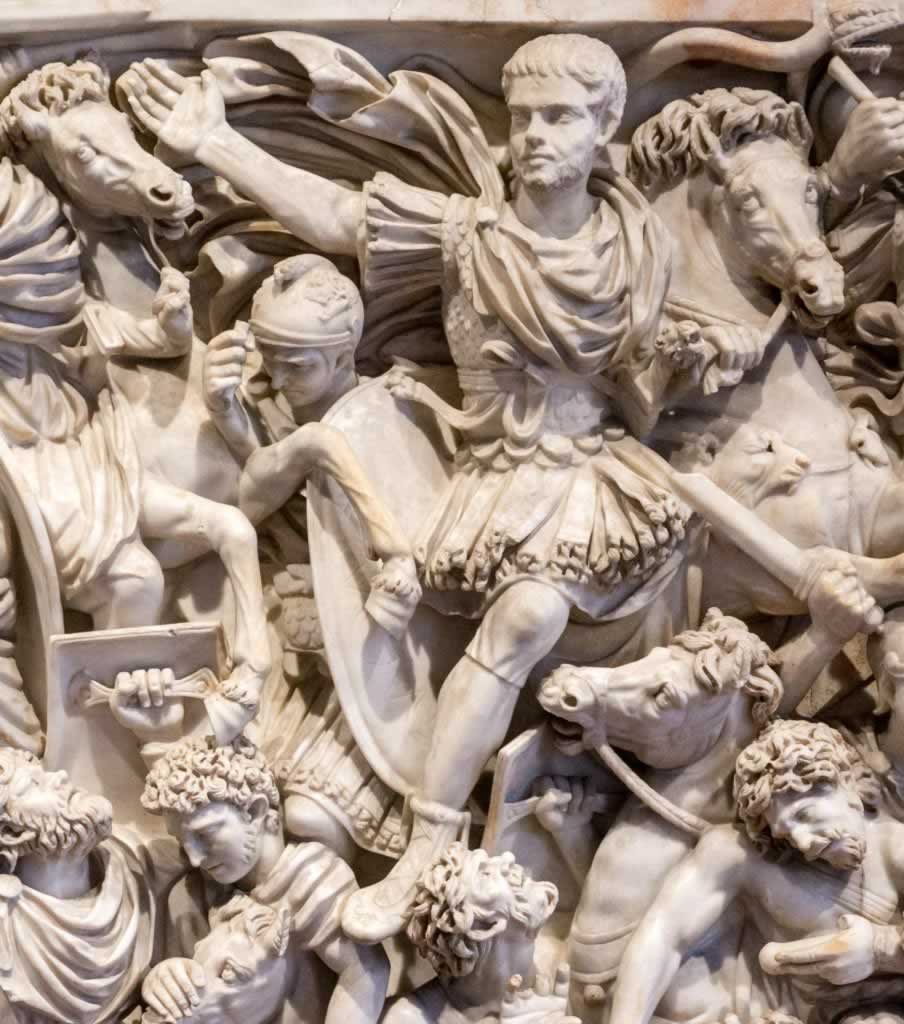
Who Created The Ludovisi Battle Sarcophagus?
The creator of the sarcophagus is unknown. This sculptor did an amazing job at carving this battle scene using a single block of Proconnesian marble. The deep relief technique creates a strong impact on the viewer. In some parts of the scene, characters are on multiple layers. It surely impressed me with its realistic appearance. You look at those Romans and barbarians and you see emotions on their faces. You look at those horses and you see their exhaustion and fear.
Look how realistic the broken spear in the photo below looks. Look at the details of the hand holding the shield. I wonder how much time it took the artist to carve out this scene.
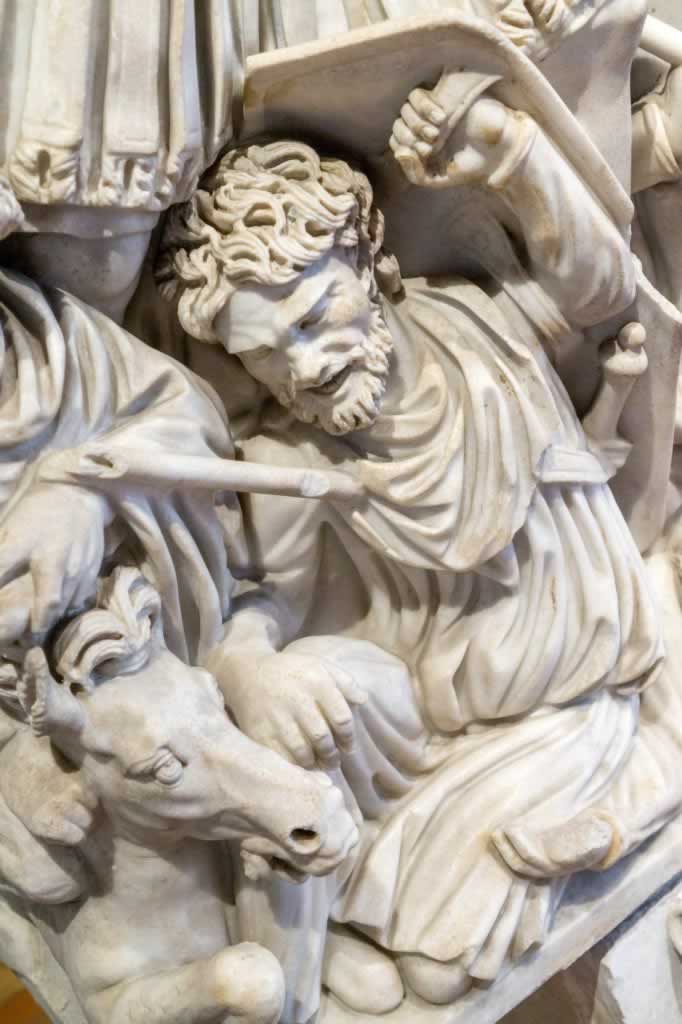
It is unbelievable that someone ordered this amazing piece of work only to serve as burial monument. I’d use it as a fireplace in my living room at any given time.
Why Should You See the Ludovisi Sarcophagus?
Apparently, this intricate sarcophagus was commissioned by a very rich person, as such a big marble piece and such a skilled sculptor didn’t come cheap. The way some of the details detach from the scene is amazing. Just look at those ropes and horse heads and tell me they are not stunning.
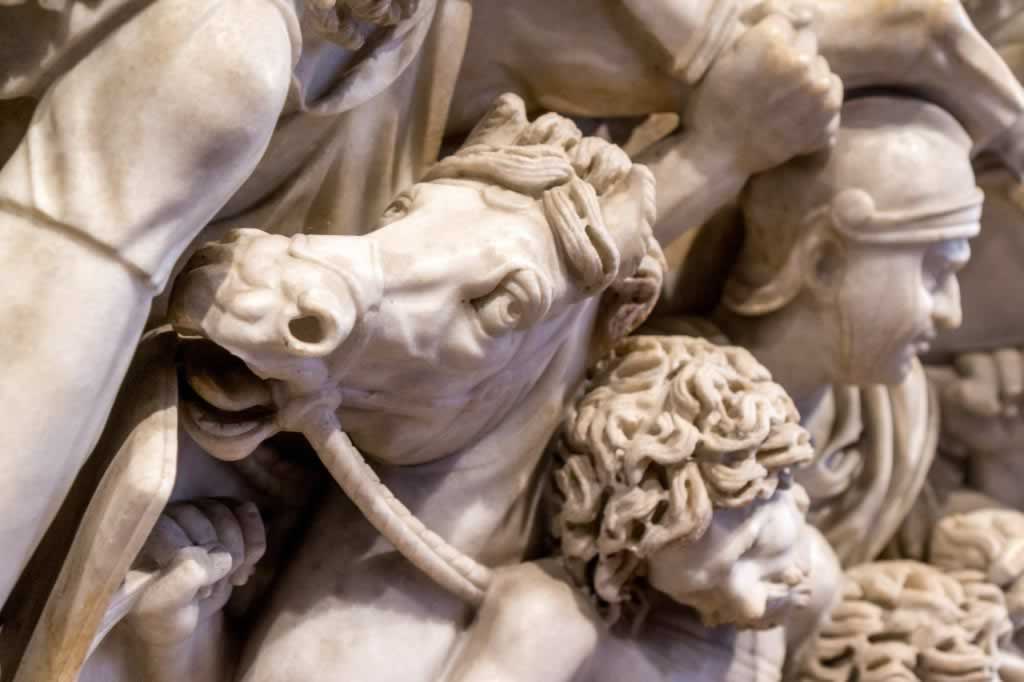
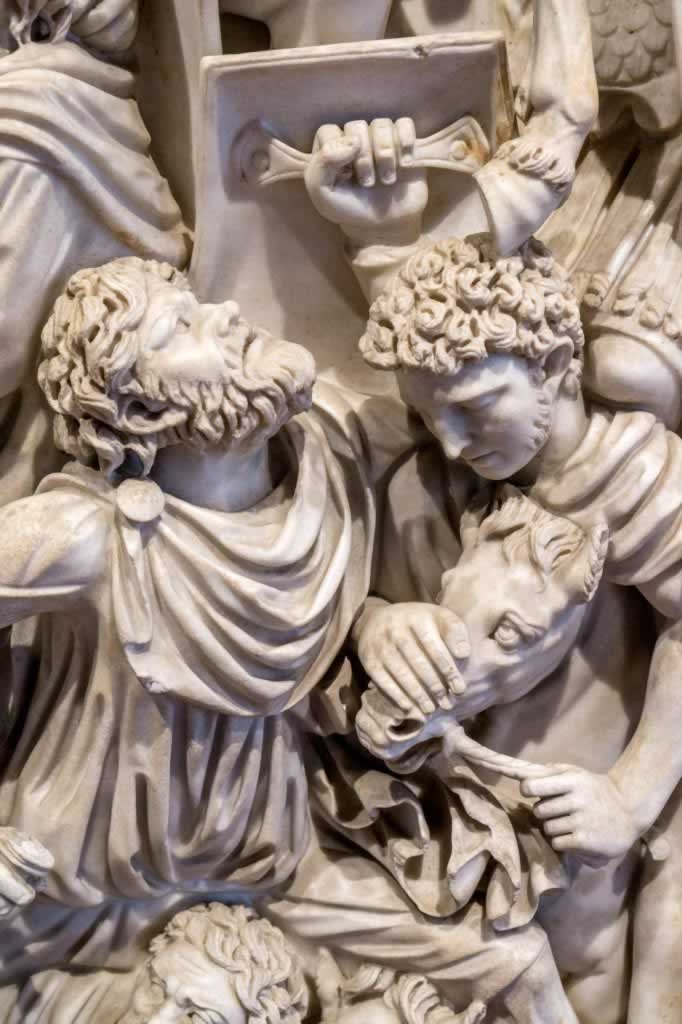
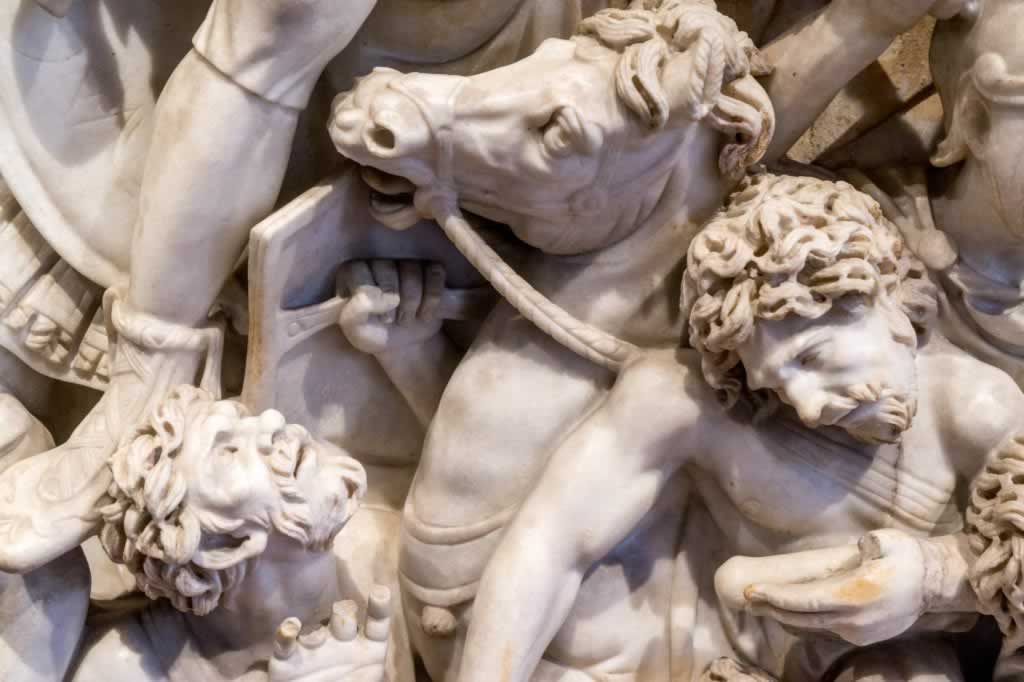
This battle between Romans and Ostrogoths doesn’t bear any specific name; Ludovisi is the name of the family that bought this sarcophagus.
The Ludovisi battle sarcophagus is a detailed history book page that tells the story of one of the victories of Roman soldiers against barbarians. At the same time, it is a proof of the artistic skills of sculptors in the 3rd century CE.
If you go to Rome, make sure you visit Palazzo Altemps. You’ll probably need about three hours to enjoy all its rooms, the interior courtyard, and all those beautiful statues and works of art. The Ludovisi battle sarcophagus is only one of the countless wonders in this museum.
Ludovisi Battle Sarcohpagus Facts
- The sarcophagus was discovered in 1621 near the Basilica di San Lorenzo fuori le Mura in Rome.
- The sarcophagus is made of Proconnesian marble and is over 6 feet tall.
- The Ludovisi Battle Sarcophagus is considered one of the finest examples of Roman funerary art.
- The sarcophagus is believed to have been commissioned by a wealthy Roman family for their tomb.
- The figures on the sarcophagus are believed to represent actual Roman soldiers and their Gothic enemies.
- The Ludovisi Battle Sarcophagus is one of the few surviving examples of Roman sarcophagi that depict battle scenes.
- The sarcophagus was likely produced in a workshop in Rome that specialized in the production of luxury goods.
- The restoration of the sarcophagus included the addition of missing pieces and the repair of damaged areas.
- The Ludovisi Battle Sarcophagus is one of the most important works of art from the late Roman Empire.
- The sarcophagus is believed to have been created during a time of political instability in Rome.
- The sarcophagus was likely created for a member of the Roman aristocracy who had a military background.
- The figures on the sarcophagus are shown in dynamic poses, with many of them engaged in hand-to-hand combat.
- The Ludovisi Battle Sarcophagus is a testament to the skill and craftsmanship of ancient Roman sculptors.
- The Ludovisi Battle Sarcophagus was likely produced during the late 2nd century AD, a time when the Roman Empire was facing significant military challenges.
- The sarcophagus is considered a prime example of the Roman artistic style known as the “Baroque.”
- The Ludovisi Battle Sarcophagus is one of the largest Roman sarcophagi ever discovered.
- The figures on the sarcophagus are shown in a highly realistic and naturalistic style.
- The sarcophagus is carved from a single block of marble.
Pin this article for later:
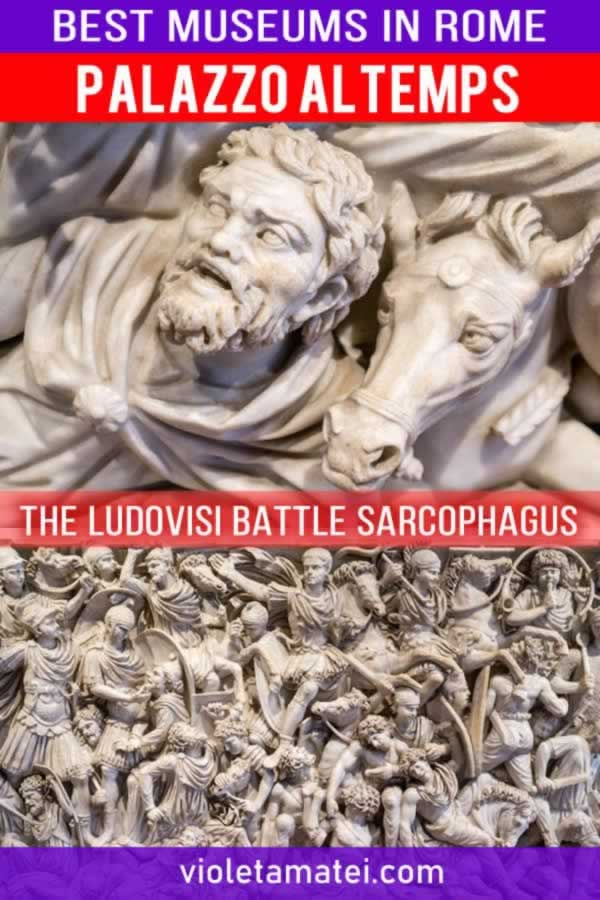
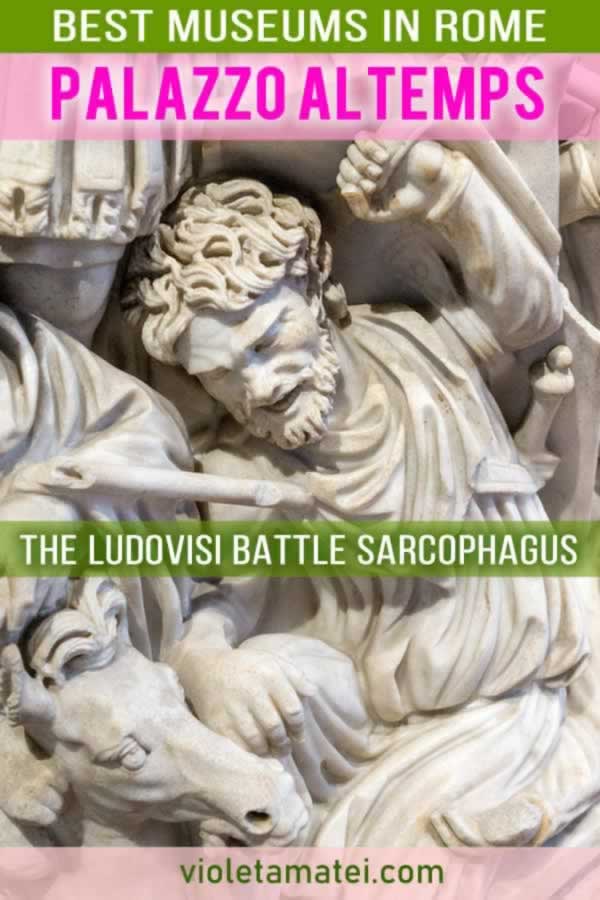
Before you go:
The Ludovisi Battle Sarcophagus is only one of the extraordinary art works you can see in Rome. Read my next article to make sure you choose the best accommodation to be close to as many tourist objectives as possible.
Related articles:
- How Many Days in Rome Is Enough?
- Trastevere: Rome’s Coolest Neighborhood
- Rome Walking Tours Self Guided – Sightseeing without the Crowds
- Crypta Balbi – A Glimpse into the Layered Urban Evolution of Rome
- Castel Sant’ Angelo in Rome – Hadrian’s Tomb, Repurposed
- Why Visit the Church of San Luigi dei Francesi in Rome
- Where to See Caravaggio in Rome: Famous Paintings in Churches
- The Roman Baths of Caracalla – Location, Tickets & Reasons To Visit
- Baths of Diocletian in Rome – Finest Ancient Roman Architecture
- Rome Ciampino Airport: A Complete Guide
- Obelisco Agonale: Ancient Monument in the Heart of Rome’s Piazza Navona
- Gianicolo Hill: Sunset with Panoramic Views of Rome
- The Small Rituals That Make You Feel More at Home When You Travel - December 3, 2025
- The Ultimate Ranking of Thailand’s Most Famous Beaches - November 28, 2025
- How To Get from Valletta to Mdina - November 20, 2025

